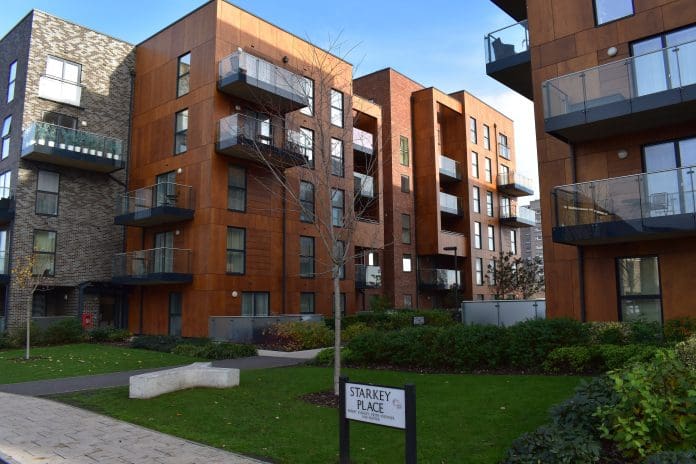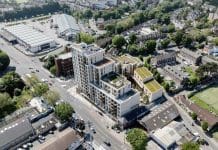Secured by Design (SBD), the official police security initiative that works to improve the security of buildings and their immediate surroundings to provide safe places to live, work, shop and visit, celebrates its 35th anniversary in 2024
Part of the Police Crime Prevention Initiatives portfolio, SBD was created in 1989 following
the housing boom of the 1960s-1980s, when there was a huge and urgent demand for
housing, with estates being built quickly and often cheaply without any basic security.
This resulted in a significant rise in burglary and it was clear that criminals were taking easy advantage of residential layouts that failed to provide adequate natural surveillance, were highly permeable, where anonymity was absolute and escape routes plentiful.
Add to this scenario the lack of effective physical security standards associated with homes at the time, it was of no surprise that by 1996, UK burglary figures peaked at 1.8m
offences a year.
SBD brought together built environment experts
It was obvious that something needed to be done to reduce burglary and encourage the
adoption of improved standards of design, layout and security and in response, the
Police Service set up SBD.
SBD work closely with architects, builders, developers, local authorities and registered
housing associations to incorporate police crime prevention standards into developments
from initial concept and design, through to construction and completion.
Police forces throughout the UK have specially trained Designing Out Crime Officers (DOCOs), who offer police designing out crime and SBD advice free of charge.
Poor design endangers not only security but sustainability
The most effective time to design out crime is literally when the plans are still on the
drawing board.
For example, the reorientation of a building or the removal of unrestricted access to the rear of a development can be easily achieved. It costs no more to design a development well, as opposed to it being designed poorly.
In fact, there is compelling evidence that poor design impacts significantly on the sustainability of a development, and thereby requires huge funds to counter the negative impacts generated by crime.
Impacts which could have easily been designed out many years before with a little
more thought.
To date, over one million homes and commercial properties have been built to SBD standards, with reductions in crime of up to 87%. A number of local authorities have
even gone so far as to introduce SBD standards as a planning requirement.
Improving security for the last 35 years
Developers around the UK can achieve SBD awards for incorporating crime prevention
measures and techniques into their developments in all kinds of building sectors, such as residential, education, health, transport, commercial, retail, sport and leisure.
Indeed, SBD can be used as evidence to discharge third-party obligations under Part Q of Schedule 1 (Security) to the English Building Regulations, the Scottish Building Standard 4.13 (Security) and Welsh Building Regulations Part Q (Security – Dwellings).
These awards are gained by working with the aforementioned DOCOs, who advise architects, developers and local authority planners long before construction begins – and continue to provide advice and guidance until the development is complete.
Academic and other research shows that improving standards of security in brand new and refurbished properties helps deter and reduce crime. Reducing crime and the fear of crime has direct links to better physical and mental well-being, such as with regard to high volume crimes like domestic abuse.
The built environment influences the behaviour of people who work, live, socialise or simply pass through.
SBD seeks to create environments where the law-abiding feel safe and secure while at the same time causing the criminal or anti-social to feel vulnerable to detection and thereby influence behaviour in a positive way. This continues to be a key objective for SBD.
Keep your knowledge up to date with SBD Design Guides
SBD has produced a series of authoritative Design Guides to assist the building, design and construction industry to incorporate security into developments to comply with the Building Regulations in England, Scotland and Wales and meet the requirements of SBD.
These Design Guides, available to download for free at the SBD website, have been updated over the years to keep pace with changing patterns of criminal behaviour and advances in building design and new technology.
They are a valuable source of reference to architects, developers, self-builders, local authority planners and police officers and cover a range of building sectors, including residential, education, health, transport and commercial.
National Building Approval means you can trust in your development’s security
SBD’s National Building Approval (NBA) scheme makes it easier for companies and
organisations commissioning new build developments or major refurbishment work to meet SBD’s police security standards or achieve Building Regulation compliance for security in England, Scotland and Wales, whichever is appropriate.
The scheme can apply to any building sector. NBA is for developers, builders and contractors, as well as organisations like local authorities, housing associations and
social landlords.
Many of SBD member companies are household name residential developers, with one of the largest local authorities in Europe becoming the first local authority to join the scheme in 2018.
Resources are also available for architects and town planners
Architects and town planners can request a RIBA-approved professional development
session on crime prevention and designing out crime from SBD.
The presentation content includes relevant legislation, policy and guidance; an overview
of property crime trends; an evaluation of why crime occurs and an introduction to SBD.
Julian Hurst
Press, public relations & social media manager
Police Crime Prevention Initiatives
Tel: +44 203 8623 999
*Please note: This is a commercial profile.














